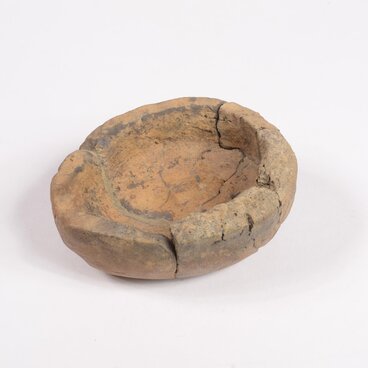During excavations on the territory of the Nefteyugansk District, archaeologists find artifacts, which indicate intensive battles in these places in the 8th — 9th centuries. For example, people of that time built settlements with a powerful and well-thought system of defense: perhaps, Salym citizens defended themselves from the other tribes’ attacks in this way.
In the 8th — 16th centuries, the situation escalated even more. A gradual shift in the social hierarchy from elders to warriors took place in the settlements. The nobility such as a prince (“master”, “bogatyr”) and his warriors occupied the dominant position. The prince’s main duty was to protect his territories from the raids of neighboring communities. There are no sources in which it would be said about the occupations of the prince or his warrior-bogatyrs. They usually took part in military conflicts with neighbors, collected tribute from conquered clans, and appropriated their property.
The nobility exceeded the wealth of the other estates. They owned settlements, houses, reindeer herds, took over jewelry, fabrics, armor, and weapons. People made up stories about their rulers, endowing them with semi-mythical features. For example, the Prince Ai-ega-iki, who headed the Malosalym principality, remained in the folklore of the Salym Khanty as the ancestor and ancient leader. The Khanty worshipped him as a sacred spirit, built shrines, and presented gifts to idols bearing the prince’s name.
It was clear that princes were rich because only a wealthy person could afford burials with expensive items. For example, during the excavations of the Ust-Balyk burial ground scientists found chain armor fragments made in the 15th century in the “4 in 1” technique. According to this method, each chain amor ring was connected with the four nearest ones. An ordinary community member couldn’t have such armor because items made of metal were very expensive, and if somebody wanted to buy such chain armor, they would need a large number of furs. The researchers concluded that the burial belonged to a nobleman. Salym citizens thought that the chain armor that was buried with its owner could provide the prince the same dominant position in the next world, as he had in the people’s world.
In the 8th — 16th centuries, the situation escalated even more. A gradual shift in the social hierarchy from elders to warriors took place in the settlements. The nobility such as a prince (“master”, “bogatyr”) and his warriors occupied the dominant position. The prince’s main duty was to protect his territories from the raids of neighboring communities. There are no sources in which it would be said about the occupations of the prince or his warrior-bogatyrs. They usually took part in military conflicts with neighbors, collected tribute from conquered clans, and appropriated their property.
The nobility exceeded the wealth of the other estates. They owned settlements, houses, reindeer herds, took over jewelry, fabrics, armor, and weapons. People made up stories about their rulers, endowing them with semi-mythical features. For example, the Prince Ai-ega-iki, who headed the Malosalym principality, remained in the folklore of the Salym Khanty as the ancestor and ancient leader. The Khanty worshipped him as a sacred spirit, built shrines, and presented gifts to idols bearing the prince’s name.
It was clear that princes were rich because only a wealthy person could afford burials with expensive items. For example, during the excavations of the Ust-Balyk burial ground scientists found chain armor fragments made in the 15th century in the “4 in 1” technique. According to this method, each chain amor ring was connected with the four nearest ones. An ordinary community member couldn’t have such armor because items made of metal were very expensive, and if somebody wanted to buy such chain armor, they would need a large number of furs. The researchers concluded that the burial belonged to a nobleman. Salym citizens thought that the chain armor that was buried with its owner could provide the prince the same dominant position in the next world, as he had in the people’s world.



